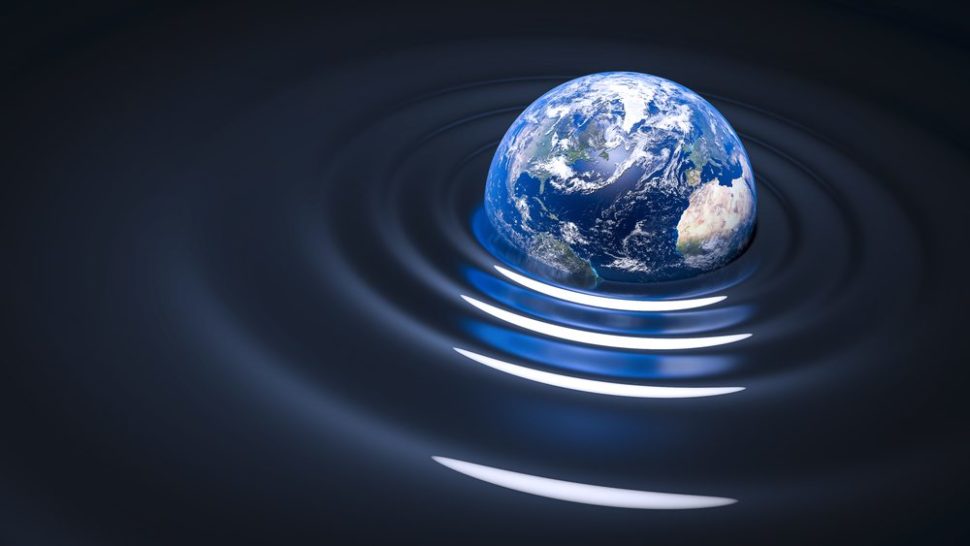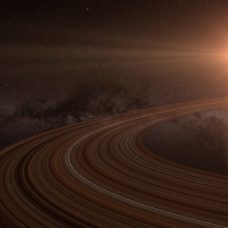The Nobel Prize in Physics 2017 was awarded to a scientific trio that discovered evidence of gravitational waves, which confirms one of Einstein’s predictions.
Once upon a time (about 1.3 million years ago), two black holes (each about 30 times the mass of our Sun) engaged in a dance of death, spiraling around one another until they collided and merged into a massive black hole.
Propagating across the universe since then, the space-time fluctuations resulting from this cosmic event–which happened long before homo sapiens ever existed–have finally reached Earth, just two years ago.
And the team of physicists who made the discovery possible just earned themselves the Nobel Prize in Physics this year.
2017 Nobel Prize in Physics awards the discovery of Einstein’s gravitational waves.Click To TweetGravitational Wave Discoverers Recognized by Nobel
On Sept. 14th, 2015, physicists directly detected these gravitational waves as they were sweeping across Earth, using two of the most sensitive instruments ever built.
This discovery that confirmed the existence of gravitational waves, theorized by Albert Einstein almost a century ago, has been recognized by the 2017 Nobel Prize in Physics.
The day before yesterday, on October 3rd, 2017, the Nobel Committee in Stockholm (Sweden) announced on a live broadcast the laureates of the Nobel Prize in Physics 2017.
Rainer Weiss (of MIT), and Kip S. Thorne and Barry Barish (of Caltech) were rewarded for their crucial contribution to the LIGO detector project and the historical discovery of gravitational waves.
Barry Barish was born in Omaha (Nebraska) in 1936, and he’s a professor of physics at California Institute of Technology (Caltech).
Rainer Weiss, born 1932 in Germany, is a professor emeritus of physics at MIT where he received his PhD.
Kip Thorne, born in 1940 in Utah, is currently a professor of theoretical physics at Caltech.
The three laureates are the founders of LIGO.
Situated in Livingston, Louisiana, is one arm of LIGO, or the Laser Interferometer Gravitational-Wave Observatory, is the world’s largest wave observatory, comprised of two L-shaped laser interferometers. The other arm is situated in Southeastern Washington state.
It’s inside these two 2.5-mile-long arms, technically vacuum tubes, that scientists run their tests using lasers. It is thanks to LIGO, and VIRGO, that the team was able to detect gravitational waves.
VIRGO, located in Pisa (Italy) is a 3-km-long interferometer and is one of LIGO’s sister facilities.

Wait, What are Gravitational Waves Anyway?
Imagined by Einstein who integrated them into his calculations a century ago, gravitational waves are a theoretical concept and remained undetectable until now.
One of the most groundbreaking concepts of Einstein’s General Relativity is “space-time” that unified time and space–which we believed to be distinct.
Space-time is the fabric of the universe and any object with a mass passes through it and deforms it. The greater the mass the greater the deformation, and this deformation influences the movements of smaller objects.
For example, the large mass of the Sun, which is a “dwarf star” by the way, distorts space in a way that forces Earth, and all other objects in the solar system, to follow an orbit around it.
That’s the basic explanation of gravity, and that gets us closer to understand gravitational waves.
Depending on its mass, every physical body in motion emits gravitational waves, which propagate across the fabric of space-time in a similar way to the waves created when a stone is thrown into a water surface.
Even you! You live in our space-time fabric. When you move, you emit gravitational waves, but they are so weak that they are impossible to detect.
To detect them, scientists must observe large objects, much larger than the Sun, which causes the most violent cosmic events–like colliding black holes or supernovae–that create enough deformations to be detected from Earth.


















Comments (0)
Most Recent